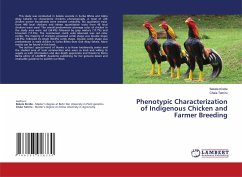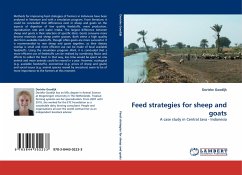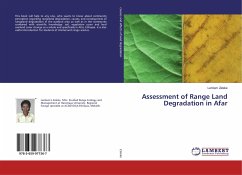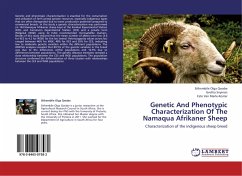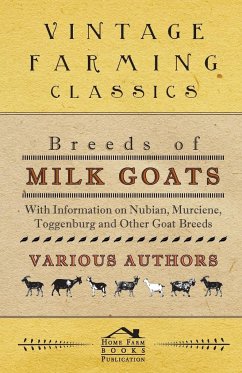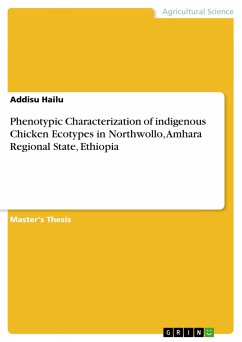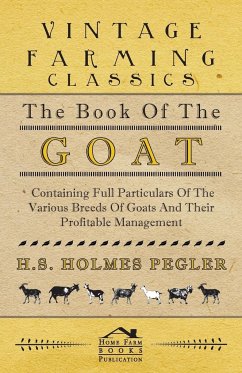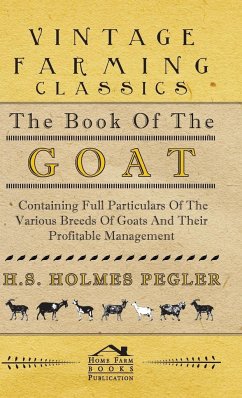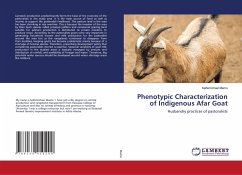
Phenotypic Characterization of Indigenous Afar Goat
Husbandry practices of pastoralists
Versandkostenfrei!
Versandfertig in 6-10 Tagen
36,99 €
inkl. MwSt.

PAYBACK Punkte
18 °P sammeln!
Livestock production predominantly forms the basis of the economy of the pastoralists in the study area. It is the main source of food as well as income to support the pastoralist's livelihood. The pasture land in the area has been shrinking in size overtime. This is because the invasion of the area by Elian bush species called prosopis juliflora and communal grazing land suitable for pasture production is distributed to private investors to produce crops. According to the pastoralists goats were very important in generating household income and milk production for the pastoralist around the a...
Livestock production predominantly forms the basis of the economy of the pastoralists in the study area. It is the main source of food as well as income to support the pastoralist's livelihood. The pasture land in the area has been shrinking in size overtime. This is because the invasion of the area by Elian bush species called prosopis juliflora and communal grazing land suitable for pasture production is distributed to private investors to produce crops. According to the pastoralists goats were very important in generating household income and milk production for the pastoralist around the area but as the rangelands continued to disappear from their localities, keeping goats has become problematic mainly because of a shortage of browse species. Therefore, prescribing development policy that considering pastoralists interest is essential. Seasonal variability of goat milk production in the studied areas is basically managed by amount and distribution of rainfall, and availability of forager and water. Therefore, big potential water sources should be developed around water shortage areas like Amibara.





